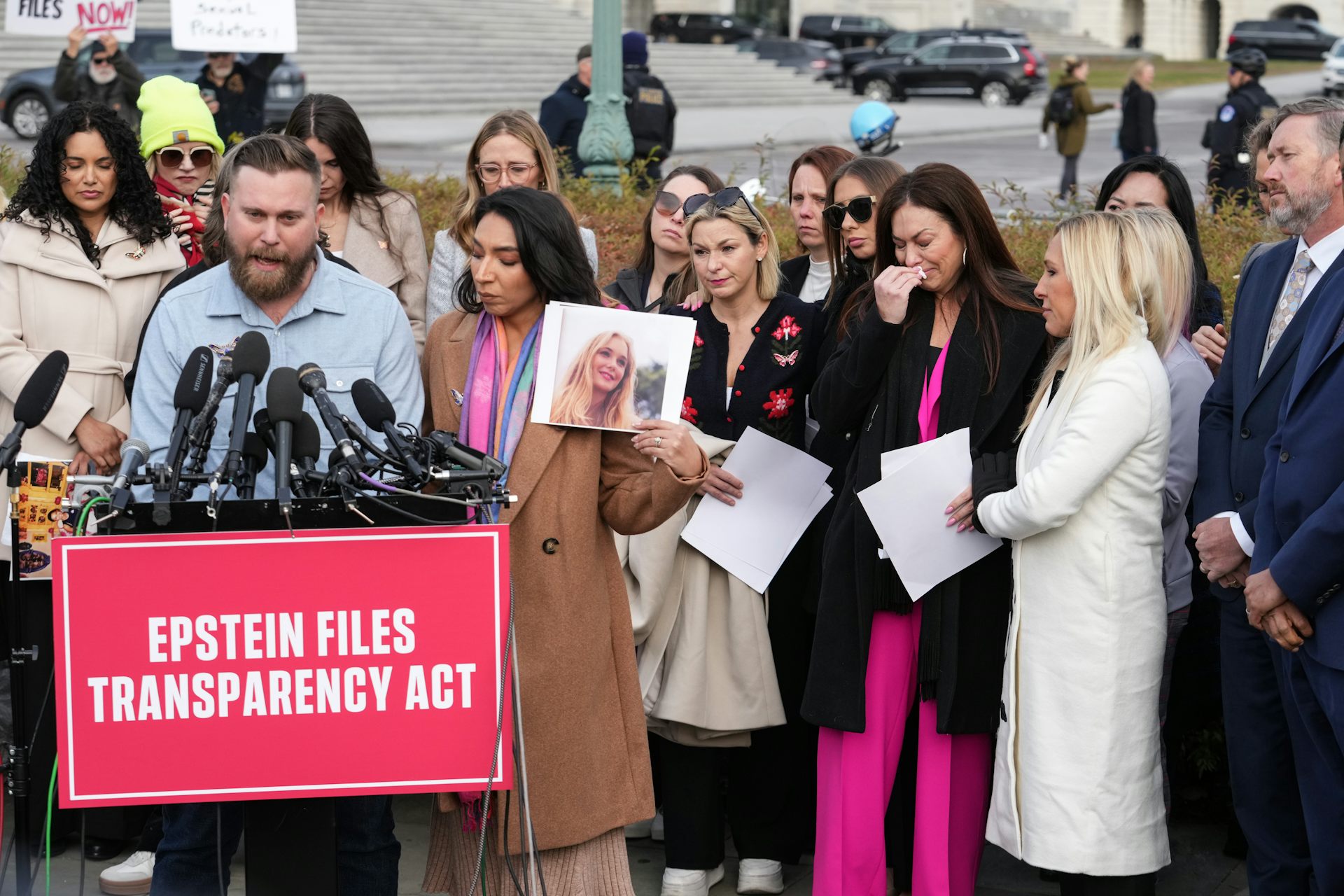Misinformation lends itself to social contagion – here’s how to recognize and combat it
Mass psychogenic illness has happened throughout history, but social media makes it more likely to spread.

In 2019, a rare and shocking event in the Malaysian peninsula town of Ketereh grabbed international headlines. Nearly 40 girls age 12 to 18 from a religious school had been screaming inconsolably, claiming to have seen a “face of pure evil,” complete with images of blood and gore.
Experts believe that the girls suffered what is known as a mass psychogenic illness, a psychological condition that results in physical symptoms and spreads socially – much like a virus.
I’m a social and behavioral scientist within the field of public health. I study the ways in which individual behavior is influenced by prevailing social norms and social network processes, across a wide range of behaviors and contexts. Part of my work involves figuring out how to combat the spread of harmful content that can shape our behavior for the worse, such as misinformation.
Mass psychogenic illness is not misinformation, but it gives researchers like me some idea about how misinformation spreads. Social connections establish pathways of influence that can facilitate the spread of germs, mental illness and even behaviors. We can be profoundly influenced by others within our social networks, for better or for worse.
The spreading of social norms
Researchers in my field think of social norms as perceptions of how common and how approved a specific behavior is within a specific network of people who matter to us.
These perceptions may not always reflect reality, such as when people overestimate or underestimate how common their viewpoint is within a group. But they can influence our behavior nonetheless. For many, perception is reality.
Social norms and related behaviors can spread through social networks like a virus can, but with one crucial caveat. Viruses often require just one contact with a potential host to spread, whereas behaviors often require multiple contacts to spread. This phenomenon, known as complex contagion, highlights how socially learned behaviors take time to embed.
Fiction spreads faster than fact
Consider a familiar scenario: the return of baggy jeans to the fashion zeitgeist.
For many millennials like me, you may react to a friend engaging in this resurrected trend by cringing and lightly teasing them. Yet, after seeing them don those denim parachutes on multiple occasions, a brazen thought may emerge: “Hmm, maybe they don’t look that bad. I could probably pull those off.” That’s complex contagion at work.
This dynamic is even more evident on social media. One of my former students expressed this succinctly. She was looking at an Instagram post about Astro Boy Boots – red, oversize boots based on those worn by a 1952 Japanese cartoon character. Her initial skepticism quickly faded upon reading the comments. As she put it, “I thought they were ugly at first, but after reading the comments, I guess they’re kind of fire.”
Moving from innocuous examples, consider the spread of misinformation on social media. Misinformation is false information that is spread unintentionally, while disinformation is false information that is intentionally disseminated to deceive or do serious harm.
Research shows that both misinformation and disinformation spread faster and farther than truth online. This means that before people can muster the resources to debunk the false information that has seeped into their social networks, they may have already lost the race. Complex contagion may have taken hold, in a malicious way, and begun spreading falsehood throughout the network at a rapid pace.
People spread false information for various reasons, such as to advance their personal agenda or narrative, which can lead to echo chambers that filter out accurate information contrary to one’s own views. Even when people do not intend to spread false information online, doing so tends to happen because of a lack of attention paid to accuracy or lower levels of digital media literacy.
Inoculation against social contagion
So how much can people do about this?
One way to combat harmful contagion is to draw on an idea first used in the 1960s called pre-bunking. The idea is to train people to practice skills to spot and resist misinformation and disinformation on a smaller scale before they’re exposed to the real thing.
The idea is akin to vaccines that build immunity through exposure to a weakened form of the disease-causing germ. The idea is for someone to be exposed to a limited amount of false information, say through the pre-bunking with Google quiz. They then learn to spot common manipulation tactics used in false information and learn how to resist their influence with evidence-based strategies to counter the falsehoods. This could also be done using a trained facilitator within classrooms, workplaces or other groups, including virtual communities.
Then, the idea is to gradually repeat the process with larger doses of false information and further counterarguments. By role-playing and practicing the counterarguments, this resistance skills training provides a sort of psychological innoculation against misinformation and disinformation, at least temporarily.
Importantly, this approach is intended for someone who has not yet been exposed to false information – hence, pre-bunking rather than debunking. If we want to engage with someone who firmly believes in their stance, particularly when it runs contrary to our own, behavioral scientists recommend leading with empathy and nonjudgmentally exchanging narratives.
Debunking is difficult work, however, and even strong debunking messages can result in the persistence of misinformation. You may not change the other person’s mind, but you may be able to engage in a civil discussion and avoid pushing them further away from your position.
Spreading facts, not fiction
When everyday people apply this with their friends and loved ones, they can train people to recognize the telltale signs of false information. This might be recognizing what’s known as a false dichotomy – for instance, “either you support this bill or you HATE our country.”
Another signal of false information is the common tactic of scapegoating: “Oil industry faces collapse due to rise in electric car ownership.” And another is the slippery slope of logical fallacy. An example is “legalization of marijuana will lead to everyone using heroin.”
All of these are examples of common tactics that spread misinformation and come from a Practical Guide to Pre-Bunking Misinformation, created by a collaborative team from the University of Cambridge, BBC Media Action and Jigsaw, an interdisciplinary think tank within Google.
This approach is not only effective in combating misinformation and disinformation, but also in delaying or preventing the onset of harmful behaviors. My own research suggests that pre-bunking can be used effectively to delay the initiation of tobacco use among adolescents. But it only works with regular “booster shots” of training, or the effect fades away in a matter of months or less.
Many researchers like me who study these social contagion dynamics don’t yet know the best way to keep these “booster shots” going in people’s lives. But there are recent studies showing that it can be done. A promising line of research also suggests that a group-based approach can be effective in maintaining the pre-bunking effects to achieve psychological herd immunity. Personally, I would bet my money on group-based approaches where you, your friends or your family can mutually reinforce each other’s capacity to resist harmful social norms entering your network.
Simply put, if multiple members of your social network have strong resistance skills, then your group has a better chance of resisting the incursion of harmful norms and behaviors into your network than if it’s just you resisting alone. Other people matter.
In the end, whether we’re empowering people to resist the insidious creep of online falsehoods or equipping adolescents to stand firm against peer pressure to smoke or use other substances, the research is clear: Resistance skills training can provide an essential weapon for safeguarding ourselves and young people from harmful behaviors.
Shaon Lahiri does not work for, consult, own shares in or receive funding from any company or organization that would benefit from this article, and has disclosed no relevant affiliations beyond their academic appointment.
Read These Next
LA fires showed how much neighborliness matters for wildfire safety – schools can do much more to te
Managing fire risk is about more than regulations and rules. It’s also about caring for neighbors…
Deepfakes leveled up in 2025 – here’s what’s coming next
After a year of fast advances, deepfakes are entering a new era defined by real-time interaction with…
Resolve to network at your employer’s next ‘offsite’ – research shows these retreats actually help f
Because they can help you get to know more of your co-workers, offsites may build the kind of trust…






